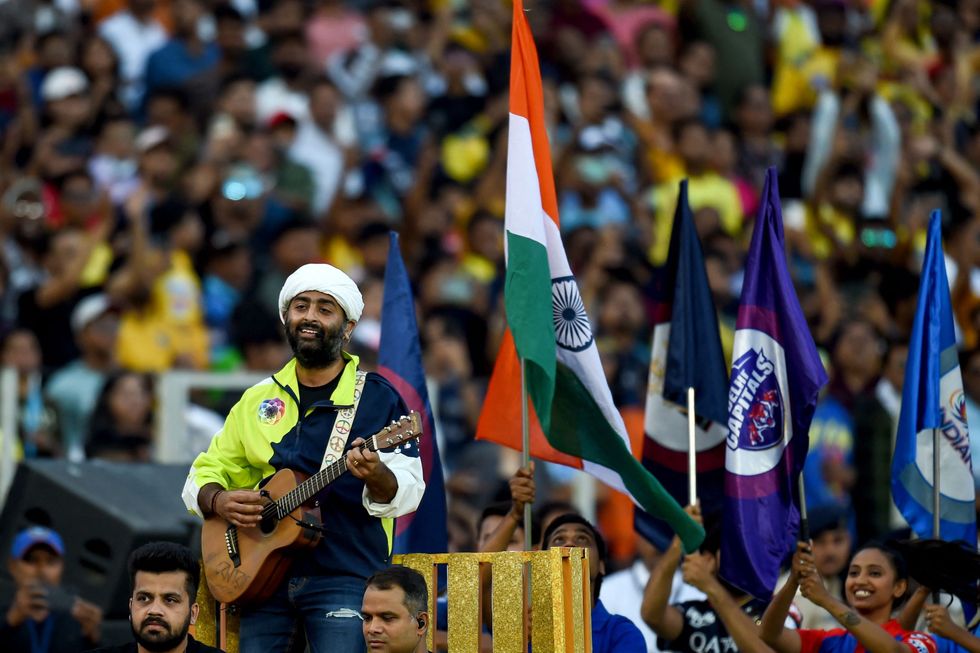by MOHNISH SINGH
HOW AAMIR KHAN IS HELPING DROUGHT-AFFECTED VILLAGES
HE MAY be one of the biggest and busiest movie stars in the world, but Aamir Khan has always been very active on the social front too.
The big-hearted A-list actor has been a part of many philanthropic endeavours including through his organisation Paani Foundation, which gives much-needed help to drought-hit villages across the Indian state of Maharashtra. His organisation lends its support to villagers in water conservation by using a slew of innovative and effective methods.
Launched in 2016, Aamir runs the non-profit NGO with his wife Kiran Rao and the team from popular Indian television series Satyamev Jayate. Their most recent initiative on May 1, which is Maharashtra Day, saw the organisation provide a unique opportunity for people from all walks of life to do volunteer work with villagers.
Eastern Eye’s Mumbai-based journalist Mohnish Singh caught up with Aamir at his Carter Road residence to find out more about the work Paani Foundation does, how people can lend a helping hand, and using his celebrity status to make a difference...
You visited Symbiosis Pune campus recently to spread awareness about Paani Foundation. What was the response like?
Pune was great! We got a very good response. It was a specific activity in which we were reaching out to the students’ fraternity in Maharashtra. Going to Symbiosis was a symbolic gesture. We went to encourage them to join us on May 1. We want people from cities to travel to villages on that day and work for three hours with the villagers and contribute to this process.
Were you socially aware when you were in college?
Yes, I was fairly aware, but to be honest I rarely spent any time in college because I didn’t study beyond twelfth standard. Up till twelfth, I was mostly doing theatre. But I was socially aware and used to respond to a similar cause like this.
Do you agree that your celebrity status has helped in grabbing the attention towards this social initiative?
Well, I have to say that first of all the idea has to have merit. And I think the idea and the concept behind what we are trying to do, which has actually been designed by Satyajit Bhatkal, the CEO of Paani Foundation, has. If the concept does not have merit, then no matter how many celebrities push it, it won’t work.
So the fact it has worked indicates that and there are celebrities like me and others who have been actively endorsing it, pushing it and working with people over the last three years.
What are the changes villagers have seen through Paani Foundation’s social initiative?
I recommend you visit our website, www.paanifoundation.in, which gives a really good idea of what the changes are. To tell you briefly, a village that does watershed management work sees a change in as short a period as one year, which means the work is done in April and May; it rains in June-July-August. Usually by early December, these villages would actually start having water tankers coming in because the water would be over by then.
But a village that has done the work doesn’t need tankers even in April and May, so they actually become tanker-free. Then again in June, the rains come, and having done the watershed work, the storage capacity in groundwater increases dramatically.
How does Watershed Management benefit villagers?
Those villages which have done the watershed management work benefit a lot as they become tanker-free. Their agriculture improves and women don’t have to walk far to collect water. Kids who are supposed to be in school don’t have to wait in line for tankers and it contributes to making farmer’s life slightly easier and better.
Watershed Management system is a lengthy process. How do you plan to make sure the process sticks with people?
What we do as Paani Foundation is first studying the science of watershed management. We have broken it down into a syllabus of how to teach it to people. And we have made it in the form of games and experiential learning, so when you learn it in four-and-a-half days, it’s something that stays with you, you enjoy doing and enthuses.
So the program of teaching is very entertaining and also has social training with it along with the technical one.
How do you take your program from village to village?
We invite villagers to take part in competitions. For them to take part, they have to send five villagers to us who we will train. Those five go back and lead the village in the competition. All the work will be done by the villagers. The village will decide what is their area of land, how many watersheds fall into it and what is the kind of work they want to do.
They make and execute the plan, and we teach them how to do it. If they ever have any questions or need advice, we have experts on standby. When the village has completed this watershed work, it has done it on its own and that is the most empowering thing for them.
How do you train so many for the initiative?
The villagers that have completed the watershed system become the experts because they have done it. They become our teachers for the next year. So in the first year, we had three training centres and 20 trainers. In the second year, we needed 20 training centres and about 140 trainers. Where will you get 140 trainers from? From the villagers who have done the work. It’s a thought-out process that we have started. It is kind of a chain reaction.
What happens when it doesn’t rain in the area?
It’s very rare that it never rains at all. In these drought areas, typically they have 300mm of rainfall, which is very less. Sometimes in severe drought it will drop to 270mm, and worst-case scenarios it may drop to 200mm per year. But it’s very unlikely that it will go below that. There could be a case when it doesn’t rain at all, even one shower, but that is very rare and unlikely.
How can people be a part of the initiative?
One of our programs is Jalmitra. You can read more on www.jalmitra.paanifoundation.in. There is a volunteer registration form to become a Jalmitra. When you do, you can come on May 1 to do volunteer Shramdaan (labour donation). Whatever villages which are available for Shramdaan will be provided to you. When you reach the village, you will be told precisely what to do.
Other than volunteering for Shramdaan, which we are pushing strongly right now, you can also donate money to an organisation called Bharatiya Jan Sanghatana (BJS). Paani Foundation doesn’t take money, but last year BJS did fantastic work in the villages.
Could you tell us something more about Bharatiya Jan Sanghatana (BJS)...
Some villages are unable to raise funds for buying machines. These villages were helped by BJS; they sent machines free of cost over there. So having seen the work of BJS last year, we are recommending to people that if you want to donate money, donate to BJS. Your money will go towards machine work which will happen in villages that have shown the strength to actually do Shramdaan but don’t have funds for the machine. The money will make a big difference.
What is the process like if one wants to volunteer more often?
You can do more. If you want to do more than this, we train you as a volunteer. To give an example, we train you how to use our app, which is to be filled up by the villagers after the competition as a before and after presentation. They have to log all the work they have done.
Some villagers find it difficult to use the app and volunteers help them to fill in the details. Another thing the volunteer can do is sensitise school and college students through presentations.
How much support are you getting from the state government of Maharashtra?
We are getting very strong support from them. The key project of our current chief minister Mr Devendra Fadnavis is that of finding a solution to water scarcity. The government also has a scheme called Jalyukt Shivar, which again does the same thing – decentralise watershed management. They take 5,000 villages and help the villages by funding some of the activities.
The chief minister and his office have been very supportive of what we have been doing. We don’t take the money from the government, but we do seek their help in other ways like transportations, logistics and all.
Are there women coming forward for Shramdaan in villages?
Women are the main guys there. Last year, we went to a village where women were doing Shramdaan every day, working very hard. The men were lazing about, making excuses, playing cards and eating tobacco. So all the women decided that they won’t go home.
After Shramdaan, they all went to a temple and slept over there. They told their husbands that they won’t come home if they don’t participate in Shramdaan. In 24 hours, the men cracked! They requested their women to come back, but they said no and asked them to first sign the register with their names and promise they will come for the Shramdaan. Then men also started coming and they began working together.
What else is being done by you to spread awareness about the issue of water scarcity?
I strongly recommend that you see our show Toofan Aalaya; it airs on Zee Marathi and you can also watch it on YouTube. All the stories regarding the initiative and projects, you will see over there. Please help us in communicating to people that we really want more and more people from cities to sign up for the Shramdaan. We want more people to register, so please encourage them to.





 Priyanka Chopra calls herself nascent in Hollywood as 'Heads of State' streams on Prime VideoGetty Images
Priyanka Chopra calls herself nascent in Hollywood as 'Heads of State' streams on Prime VideoGetty Images  Priyanka Chopra wants to build her English film portfolio after Bollywood successGetty Images
Priyanka Chopra wants to build her English film portfolio after Bollywood successGetty Images  Ilya Naishuller, Priyanka Chopra and John Cena attend the special screening for "Head of State" Getty Images
Ilya Naishuller, Priyanka Chopra and John Cena attend the special screening for "Head of State" Getty Images








 Arijit Singh performing Instagram/
Arijit Singh performing Instagram/ Arijit Singh clicked during a performance Getty Images
Arijit Singh clicked during a performance Getty Images 


 Liam Gallagher accepts Oasis' award for 'Best Album of 30 Years' Getty Images
Liam Gallagher accepts Oasis' award for 'Best Album of 30 Years' Getty Images  Liam Gallagher plays to a sell out crowd at the Universal AmphitheatreGetty Images
Liam Gallagher plays to a sell out crowd at the Universal AmphitheatreGetty Images Liam and Noel Gallagher perform together in Cardiff for the first time since 2009 Instagram/oasis
Liam and Noel Gallagher perform together in Cardiff for the first time since 2009 Instagram/oasis